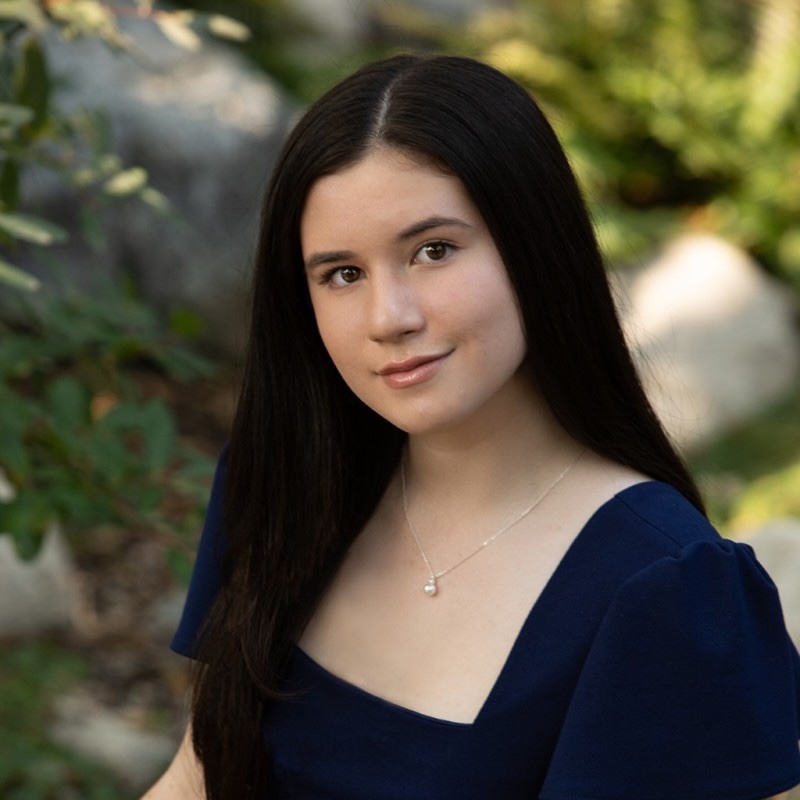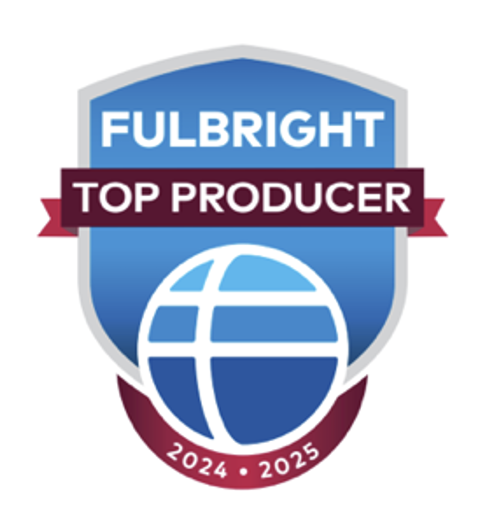Bowdoin Funds Twenty-Two Ambitious Student Projects Across the Curriculum
By Rebecca Goldfine
The students this year are involved in independent research in chemistry, biology, environmental studies, history, computer science, earth and oceanographic science, neuroscience, government, English, and Asian Studies.
The grants enable students to expand the scope of their honors projects or independent studies—either with equipment or books, or through travel to libraries, archives, and other sites related to their studies. Often students use the funds to attend academic conferences where they present their research, a first step for many as they work on writing articles on their findings to submit to peer-reviewed journals.
Corey Colwill, associate director of the Center for Cocurricular Opportunities, said that each year his office receives "an impressive number of applications" from students seeking support for their research at the College. "Without programs such as the Fall Research Award, students would not be able to conduct these projects at the highest level. We are extremely grateful to the donors of this program and look forward to funding many future projects," he added.
Below are short descriptions of this year's projects, which were funded by the Grua/O’Connell Fund, Davis Fund, Koelln Fund, and Roberts Fund.
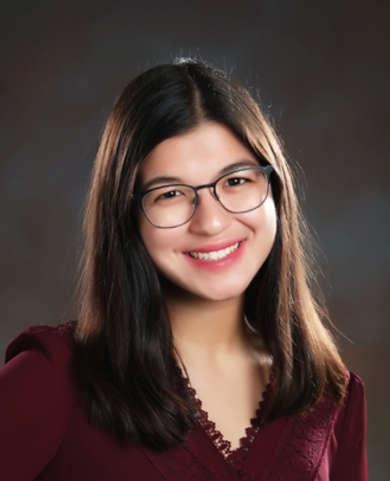
Maryam Akramova ’24, Developing catalysts for hydrogen fuel
Akramova is developing catalysts in the Tate lab that can convert hydrogen and carbon dioxide into a usable fuel to replace greenhouse gas-emitting fossil fuels. "Hydrocarbon fuels produced in this way would provide a sustainable, carbon-neutral means of storing renewable energy suitable for transportation applications," she writes. For her honors project, Akramova is pursuing a method that focuses on "mismatched" catalysts. A "mismatched pair, such as a soft acid paired with a hard base, would result in a weak, reactive chemical bond, which we anticipate would provide a strategic platform for the catalytic transformation of hydrogen to energy-dense hydrocarbons," she writes.
Major: Biochemistry
Faculty advisor: Brandon Tate
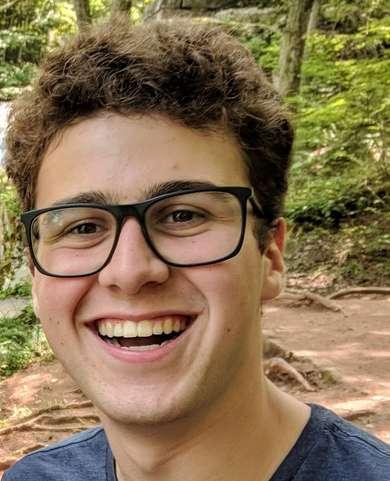
Lyle Altschul ’23, Inorganic nutrient dynamics in Harpswell Sound
Altschul is implementing new methods he helped to develop last summer to continuously measure and analyze the levels of inorganic nutrients in Harpswell Sound, such as nitrate, phosphate, silicate, and ammonium. The purpose of this work is to determine the robustness and dynamics of the Sound's phytoplankton population, which requires inorganic nutrients to survive. Phytoplankton are "tiny plant-like organisms called protists that serve as the backbone of coastal ocean ecosystems," Altschul writes. But some species can cause toxic blooms. "...Monitoring the nutrient concentrations of local coastal areas and finding trends within them is important to protecting the future health of coastal marine environments like Harpswell Sound," he writes.
Major, minor: Earth and Oceanographic Science, Mathematics, English
Advisor: Collin Roesler
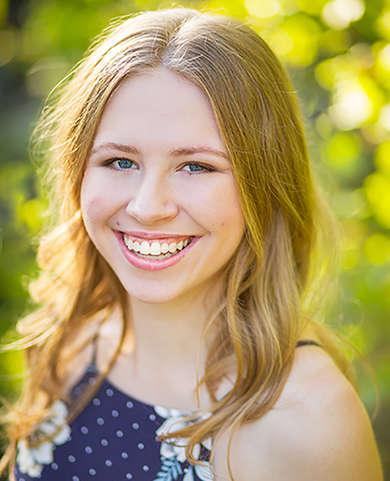
Cassidy Bateman ’24, Public exhibit on PFAS chemicals in our community
PFAS, or per- and polyfluoroalkyl substances, are chemicals that have been heavily used in manufacturing for several decades and are harmful to people's health. Bateman has researched the exposure pathways and remediation techniques of PFAS, and is now building an exhibit in Druckenmiller Hall to demonstrate how PFAS affects communities and how the can be removed from a place like Bowdoin. "I am completing a project that brings together my love for chemistry with that of science communication, creativity, and museums," Bateman writes.
Major, minor: Chemistry, Theater
Advisors: Beth Stemmler and Barry Logan
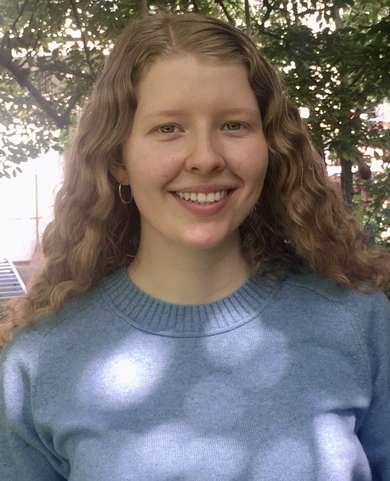
Katie Draeger ’24, Climate-mitigating infrastructure, renewable energy, and affordable housing
Draeger is "conducting an honors project [to] explore the challenges faced by municipalities in simultaneously implementing climate-mitigating infrastructure and renewable energy policies, while also addressing the affordable housing crisis." In particular, she is studying how community input and engagement with stakeholders inform the process of constructing affordable housing, particularly units with sustainable, forward-thinking designs. "I will ultimately compile a paper with the solutions successful
so far, and with new solutions that arise from my case study and interview-based study," she writes.
Major, minor: Enviromental Studies, Hispanic Studies, Sociology
Advisor: Eileen Sylvan Johnson
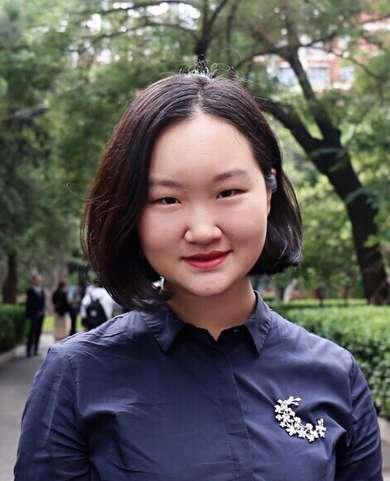
Nuanxi (Sissi) Feng ’24, Sex-specific effects of ketamine treatment
Feng is researching the effects of ketamine on female rats that have experienced early-life adversity (ELA). Specifically, she wants to learn more about the role of estrogens in mediating the behavioral and neural effects of ketamine treatment. ELA—caused by situations such as abuse or neglect—increases the risk of adults, especially women, developing psychiatric disorders like anxiety and depression, yet studies so far have been largely conducted on male subjects. In recent years, "ketamine has been used to treat depression and anxiety with promising effect, yet the effect shows sex-dependence, and the underlying mechanism of action remains relatively unknown," Feng writes.
Major, minor: Neuroscience, Chemistry
Advisor: Jennifer Honeycutt

Clara Jergins ’24, Sanctuary cities
Jergins is working on a project on immigrant and asylum policies in the US. Her fall research award funded her travel to both sanctuary and non-sanctuary cities in Arizona and Florida, to examine how changing asylum policies have strained the resources of immigrant-focused NGOs (non-governmental organizations) or changed the ways they work. She is also studying how sanctuary policies affect asylum-seekers' quality of life, such as their ability to work or their access to higher-quality legal services. "Bad legal advice thrives in situations where people [fearing deportation] are obliged to make use of unofficial resources," she writes.
Major, minor: Government and Legal Studies, Hispanic Studies, Economics
Advisor: Ángel Saavedra Cisneros
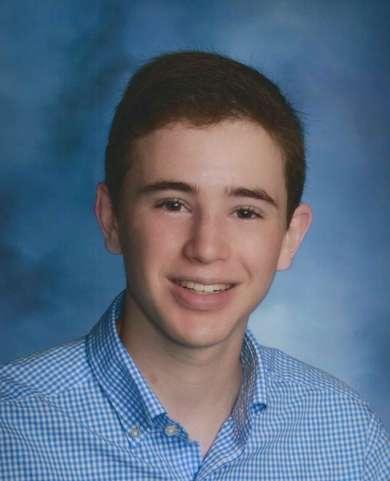
Zach Leibowitz ’24, Improving hydrogen for use as a clean-energy fuel
Hydrogen gas, while promising as a renewable energy, cannot be easily compressed under standard conditions, limiting its potential application in industries that require high-density fuels. In the Tate lab, Leibowitz is developing a catalyst that would drive the hydrogenation of small, carbon-based molecules and convert hydrogen to a liquid fuel with high energy density. "Combining hydrogen production with subsequent carbon fixation would allow for the sustainable production of high-density carbon-neutral liquid fuels for the storage of renewable energy," Leibowitz writes.
Major, minor: Biochemistry, Psychology
Advisor: Brandon Tate
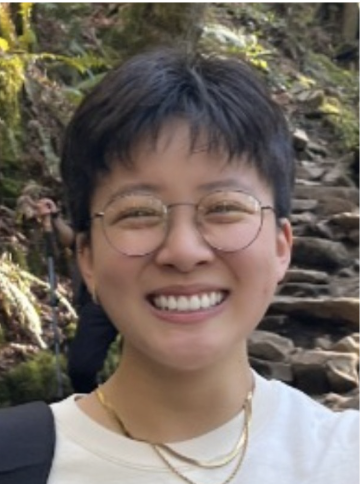
Sophia Li ’24, "Navigating Diasporic Selfhood in Chinese-American Fiction"
Li's project focuses on several contemporary Chinese American authors, analyzing their texts through frameworks of self-writing (autofiction and autotheory). Autofiction blends autobiographical elements with fiction, and autotheory considers the ways in which multiple identities—such as race, gender, and sexuality—intersect. "While the field has received renewed interest in the past few years, I argue that Chinese American literature has always been concerned with theorizing the self intersectionally through writing, regardless of whether the work is published as memoir, fiction, or criticism," Li writes.
Major, minor: Asian Studies, English, Economics
Advisor: Belinda Kong
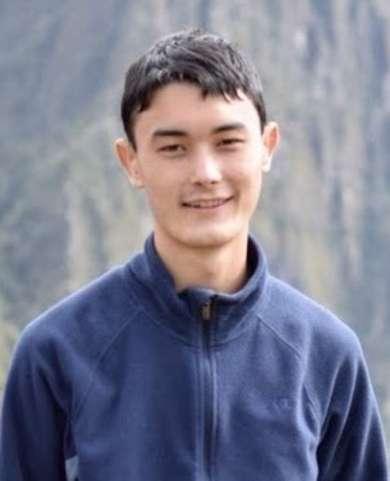
Jared Lynch ’24, Mitochondrial adaptation in the Gulf of Maine's green crab hybrid zone
Lynch is researching the link between mitochondrial function and thermal tolerance in the invasive European green crab, as well as trying to find the underlying genetic factors for this tolerance. This work ties together recent genomic work with bioenergetic data. "From an ecological perspective, this is important for understanding the traits that make C. maenas such an effective invader, while also helping to predict how it will respond to ocean warming. More broadly, this work is building a new ectothermic model in the growing field of mitochondrial research," he writes.
Major, minor: Biology, Chemistry
Advisor: David Carlon

Phoebe Marin ’26, How video games reflect history
Marin is working with the video games Bioshock (2007), Wolfenstein: The New Order (2014), and Call of Duty: WWII (2017) to study how they engage both history and film conventions. Her final analysis will include an intricate video essay that incorporates clips from films and games. "In our current digital age, I believe that the study of digital media like film and video games is important to understanding how people absorb history and understand the world around them," she writes.
Major: Undeclared
Advisor: Patrick Rael

Brielle Martin ’24, Reconstructing past Gulf of Maine temperatures from shells
The study of historical ocean conditions, or paleoceanography, is helping scientists better understand current climate patterns, especially ocean acidification and warming. Martin's research analyzes the shells of bivalves to reconstruct past Gulf of Maine temperatures. She is first focusing on developing a more accurate calibration process for the relationship between ocean temperature and oxygen isotopes for mollusks, then using that method to create a temperature time series for the long-lived Arctica islandica clam.
Major, minor: Environmental Studies, Earth and Ocean Science, Chinese
Advisor: Michèle LaVigne
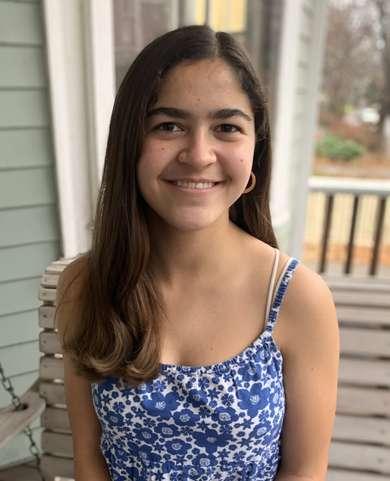
Sophie Nigrovic ’24, New sugars that target pathogenic bacteria
Nigrovic is seeking to characterize the preferences of a panel of pathogenic and opportunistic bacteria—including Staphylococcus aureus, Plesiomonas shigelloides, Vibrio vulnificus, Helicobacter pylori, and Bacteroides fragilis—for two classes of sugar analogs. Her work is part of the Dube lab's mission to help develop new antibiotics that selectively target bacterial sugars, or glycans, that can replace our current slate of increasingly ineffective drugs.
Major: Biochemistry, History
Advisor: Danielle Dube
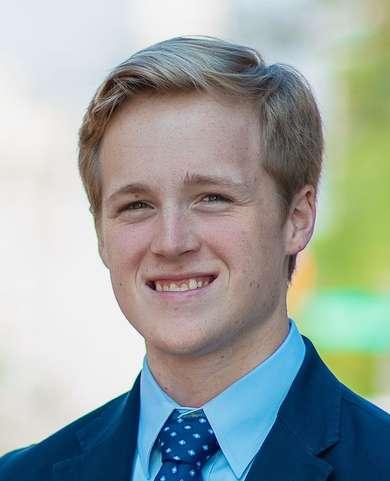
Hayden Redelman ’24, John Ruskin's political thought
Redelman's project focuses on John Ruskin, a leading Victorian intellect who wrote on art and political philosophy, among other subjects. Redelman is interested in Ruskin's "turn" from "art history and criticism to radical political activism," as he sees this shift "as crucial to understanding Ruskin’s corpus." In this way, Redelman means to highlight the moral significance of Ruskin's artistic writings and the theoretical underpinnings of his political activism. "This is a largely novel reading of Ruskin that hopes to show the enduring relevance of his thought, especially as we navigate populist revolt and growing radicalization," he writes.
Major, minor: Government and Legal Studies, English, Urban Studies
Advisor: Paul Franco
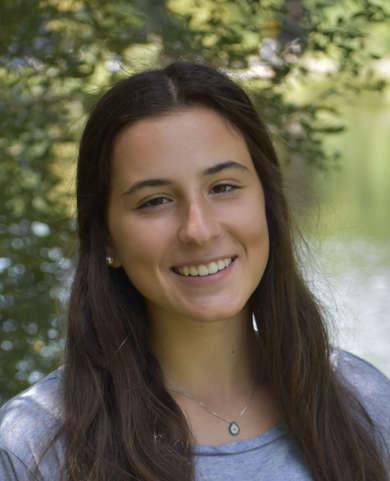
Sophia Rutman ’24, Interactive digital storytelling
Rutman's project "looks at the effectiveness of three different Large Language Models (LLMs) and three different prompts in generating text predicting a character’s next decision in a chosen film," she writes. An LLM is a type of machine learning that can understand a string of text and produce a human-like response. Rutman's work has implications for the future of creating media, particularly those with alternative plot lines. "As opposed to replacing human authorship, LLMs can aid in content creation and engagement with media by adapting to the user," she says.
Major, minor: Physics, Computer Science, Education
Advisor: Sarah Harmon

Mia Schwartz ’25, Reconstructing past Gulf of Maine temperatures from shells
Schwartz is using her research grant to attend the upcoming fall meeting of the American Geophysical Union and present the results of her summer research. During that time, she studied paleoclimate data that can be gained from using old clam shells as climate proxies, and she investigated and wrote about these shell heaps—also known as middens—and the ethics of excavating them. Middens are ancient remnants from Native American societies.
Major: Environmental Studies, Anthropology
Advisor: Michèle LaVigne

Benjamin Sewell-Grossman ’24, Exploring Drosophilia photoreceptor oraganization
Sewell-Grossman is conducting experiments to help elucidate the mechanism behind a specific gene's phenotype in the common fruit fly, Drosophila melanogaster, that contributes to the development of the fly's visual system. "The visual system undergoes complex organizational processes and growth patterns throughout embryogenesis, many of which remain mysterious," Sewell-Grossman writes. It's possible that findings from his project could inform future experiments and provide insight toward potential therapeutics for visual disorders, he adds.
Major, minor: Biology, Mathematics
Advisor: Jack Bateman

Jon Sides ’24, Mental representations in language comprehension
Jon Sides used his fall research award to attend the annual conference of the Psychonomic Society — an organization for cognitive science scholars in San Francisco—where he presented his research. His experiments into language comprehension could add to the literature on "how humans mentally represent events...and how they prioritize different features or object properties to make sense of the events." His findings could also "lead to improvements of language discourse models in cognitive science, allowing for the development of more refined, psychologically plausible AI models," he writes.
Major, minor: Mathematics, Psychology, Economics
Advisor: Abhilasha Kumar

William Surks ’24, Eradicating disease-causing H. pylori bacteria
Surks is researching the immune response of mammalian cells to H. pylori strains, with the goal of helping Dube's lab develop treatments that permanently eradicate H. pylori from the human gut while leaving the remainder of the gut biome intact. H. pylori, one of the most common causes of bacterial infection worldwide, resides in the gastrointestinal tract of its host, causing diseases such as peptic ulcers and gastric carcinoma. One way to eradicate it is to hone our natural immune defenses to recognize and target its presence—findings that could strengthen immune-based treatments for other diseases, Surks notes.
Major, minor: Biochemistry, Psychology
Advisor: Danielle Dube
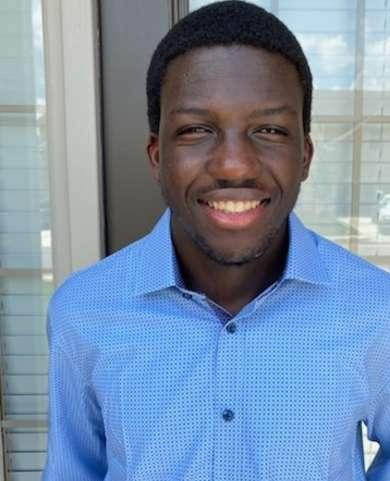
Foje-Geh Tendoh ’24, New therapies to target bacterial sugars
Tendoh is working in the Dube lab to mitigate rising antibiotic resistance by testing new probes to selectively target bacterial glycans. Bacterial glycans are sugar networks that coat the surface of bacteria and are linked to bacterial virulence. He notes that selective probes would be effective in developing targeted antibiotics, which will decrease the rate of pathogenic bacteria acquiring antibiotic resistance. This summer, Tendoh optimized a protocol to track the intracellular location of these specialized fluorescent probes in pathogen H. pylori. His current research aims to validate the uptake of sugar probes in other bacterial species, determine the reproducibility of uptake trends, and characterize the monosaccharide transporter proteins in pathogenic bacteria.
Major: Biochemistry, Mathematics
Advisor: Danielle Dube
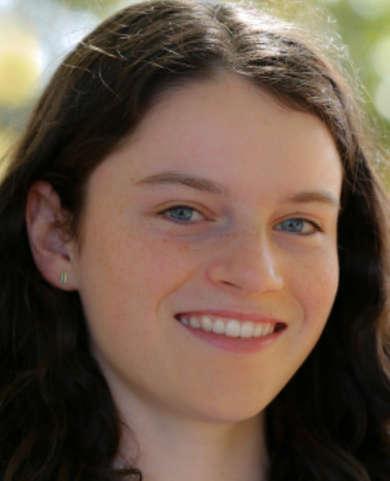
Josie Tidmore ’24, Lobsters in warming waters
Global perturbations, like fluctuations in salinity, affect all cellular processes in marine organisms, yet the nervous systems of these animals are remarkably robust to this environmental challenge. “Neural compensation in response to changes in salinity is a requirement for the survival of these organisms, as salinity perturbations can disrupt the carefully-balanced flow of ions across the cell membrane that is essential to physiological function,” Tidmore writes. Recent work in the Powell Lab does suggest that a lobster neural circuit can maintain function across a relatively wide, ecologically-relevant salinity range in the short-term. Tidmore is now investigating whether this function can be maintained in the longer term as a result of adaptive changes in ion channel expression.
Major: English, Neuroscience
Advisor: Daniel Powell

Oliver Wang ’24, Synthetic control in crystallization
Wang is investigating how to synthesize metal-organic framework (MOF) crystals more quickly, cheaply, and in more environmentally friendly ways—findings that could be desirable for real-world applications. These crystals are useful in capturing gases, removing pollutants from wastewater, and targeted drug delivery. "There is still much to be understood on how the synthetic conditions affect the size, shape, and structure of MOF crystals, which are influenced by many factors such as the solvent, method of synthesis, additives, and temperature," Wang writes. "The main goal of my honors project is to optimize synthetic control over MOFs to predictively obtain high-quality crystals."
Major: Chemistry, Physics
Advisor: Amnon Ortoll-Bloch

Alex Washburn ’25, Sleep and dementia
Washburn is looking into the relationship of sleep to neurodegenerative diseases, like Alzheimer's, using a non-invasive technique to detect cycles of activity and rest (otherwise known as our circadian rhythms). The research he's been involved with is interested in the difference between participants' subjective experiences of the quality of their sleep and their health outcomes. "This research is of great importance, because sleep, due to its close relationship with neurodegenerative disease, is an increasingly important variable in dementia research," he writes.
Major: Computer Science, Earth and Oceanographic Science
Advisor: Sarah Harmon
